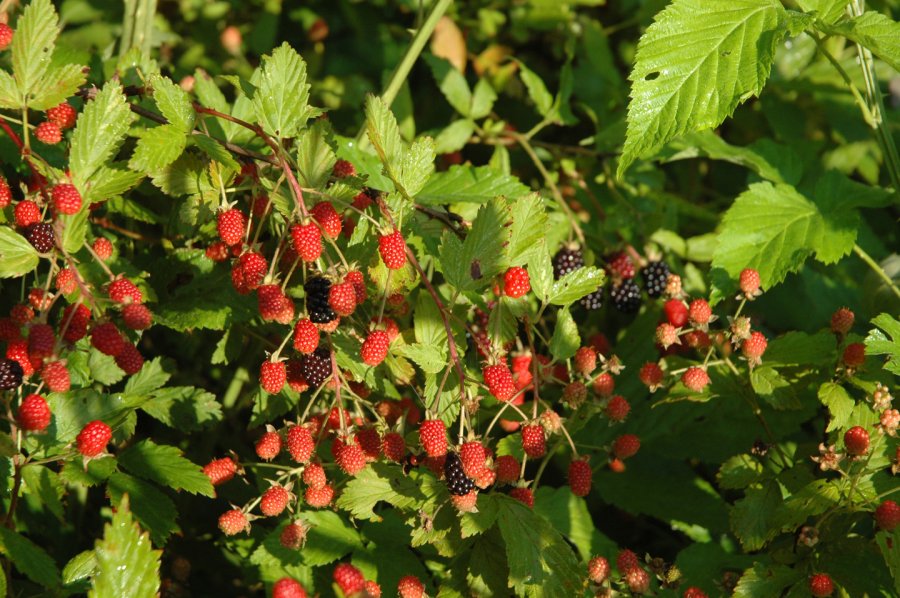Food studies have identified several hundred plant species that deer will consume during the course of a year. Some are used seasonally, some only when little else is available, and some are preferred regardless of season and other species’ availability. As deer managers, it is important to understand the preferred forages where you live and/or hunt, and while learning everything deer eat in your area is a daunting task, the QDMA has just made it a little easier.
Whitetails eat a variety of plant types such as trees, shrubs, herbaceous forages (forbs), and agricultural crops. Most hunters can easily identify the agricultural crops in their area, and they are well versed in which ones deer prefer. Many hunters can also readily identify the predominant tree species in their area that deer use, but far fewer hunters can identify the important shrub and herbaceous species where they hunt. Therefore, the QDMA surveyed every state and provincial deer project leader and asked them to provide 10 of the top naturally occurring native herbaceous and shrub species that whitetails use in their jurisdiction.
We received a species list from about half of the states and from six of eight provinces that we surveyed. Some lists were current and others included data from past studies. We combined states into three regions – Midwest, Northeast, Southeast – and created regional lists of important shrub and herbaceous deer foods (unfortunately we only received data from two states west of the plains). The species in these lists (see the table below) are arranged alphabetically, and only some were selected based on scientific analyses. Most were identified by the state/province’s deer biologist as species commonly eaten by deer in their jurisdiction. I present this data only on an informational basis, but strongly encourage deer hunters and managers to learn to identify (and in many cases promote) the species listed for their region. Additional information is provided below, including five more “notable” species for each region.
Some species are region specific while others are used across much of the whitetail’s range. For example, brambles (blackberry, etc.) were reported as an important deer forage in all three U.S. regions and in Canada. Grapes and greenbriar were listed as top forages in all three U.S. regions, and poison ivy, ragweed and wild rose were listed in two of three U.S. regions (wild rose was also listed in Canada).
Midwest – We received data from 4 states (IL, IN, KS, KY). Brambles and grape were most often reported. Coralberry, dogwoods, greenbriar, Illinois bundleflower, ragweed, trumpet creeper, wild lettuce and wild rose were also important species. Other notable plants included asters, plums, pokeweed, sumac and trillium.
Northeast – We received data from 4 states (ME, NH, NJ, PA). Bracken fern, brambles, grape and greenbriar were reported by multiple states. Canada mayflower, jewelweed, poison ivy, Virginia creeper, wild rose and wild sarsaparilla were also important species. Other notable plants included blue bead lily, goldenrod, plantain, sumac and winterberry.
Southeast – We received data from 9 states (AL, AR, FL, LA, MS, OK, SC, TN, TX). Brambles, grape, greenbriar, honeysuckle (primarily the native coral, but also non-native Japanese/white) and ragweed were listed by nearly every responding state. Pokeweed and strawberry bush were listed by about half of the states, and American beautyberry, beggar’s lice and poison ivy were also listed by a third of the states. Other notable plants included Alabama supplejack, devil’s walking stick, Florida pusley, old field aster and trumpet creeper.
Canada – We received data from 6 provinces (BC, MB, NS, ON, QC, SK). Asters, brambles, choke cherry, fireweed, pondweed, snowberry, sow thistle, trillium, Virginian strawberry and wild rose were all reported from more than one province. Other notable plants included Canada mayflower, jewelweed, lupines, ragweed and wild lettuce.
| Midwest | brambles (blackberry, etc.) | rubus species |
| coralberry | Symphoricarpos orbiculatus | |
| dogwoods | Cornus species | |
| grape | Vitis species | |
| greenbriar | Smilax rotundifolia | |
| Illinois bundleflower | Desmanthus illinoensis | |
| ragweed | Ambrosia species | |
| trumpet creeper | Campsis radicans | |
| wild lettuce | Lactuca virosa | |
| wild rose | Rosa acicularis | |
| Northeast | bracken fern | Pteridum aquilinum |
| brambles (blackberry, etc.) | Rubus species | |
| Canada mayflower | Maianthemum canadense | |
| grape | Vitis species | |
| greenbriar | Smilax rotundifolia | |
| jewelweed | Impatiens capensis | |
| poison ivy | Toxicodendron radicans | |
| Virginia creeper | Parthenocissus quinquefolia | |
| wild rose | Rosa acicularis | |
| wild sarsaparilla | Aralia nudicaulis | |
| Southeast | American beautyberry | Callicarpa americana |
| beggar’s lice | Desmodium obtusum | |
| brambles (blackberry, etc.) | Rubus species | |
| grape | Vitis species | |
| greenbriar | Smilax rotundifolia | |
| honeysuckle | Lonicera species | |
| poison ivy | Toxicodendron radicans | |
| pokeweed | Phytolacca americana | |
| ragweed | Ambrosia species | |
| strawberry bush | Euonymus americanus | |
| Canada | asters | Aster species |
| brambles (blackberry, etc.) | Rubus species | |
| chokecherry | Prunus virginiana | |
| fireweed | Epilobium angustifolium | |
| pondweed | Potemomgeton species | |
| snowberry | Symphoricarpos albus | |
| sow thistle | Sonchus species | |
| trillium | Trillium species | |
| Virginia strawberry | Fragaria species | |
